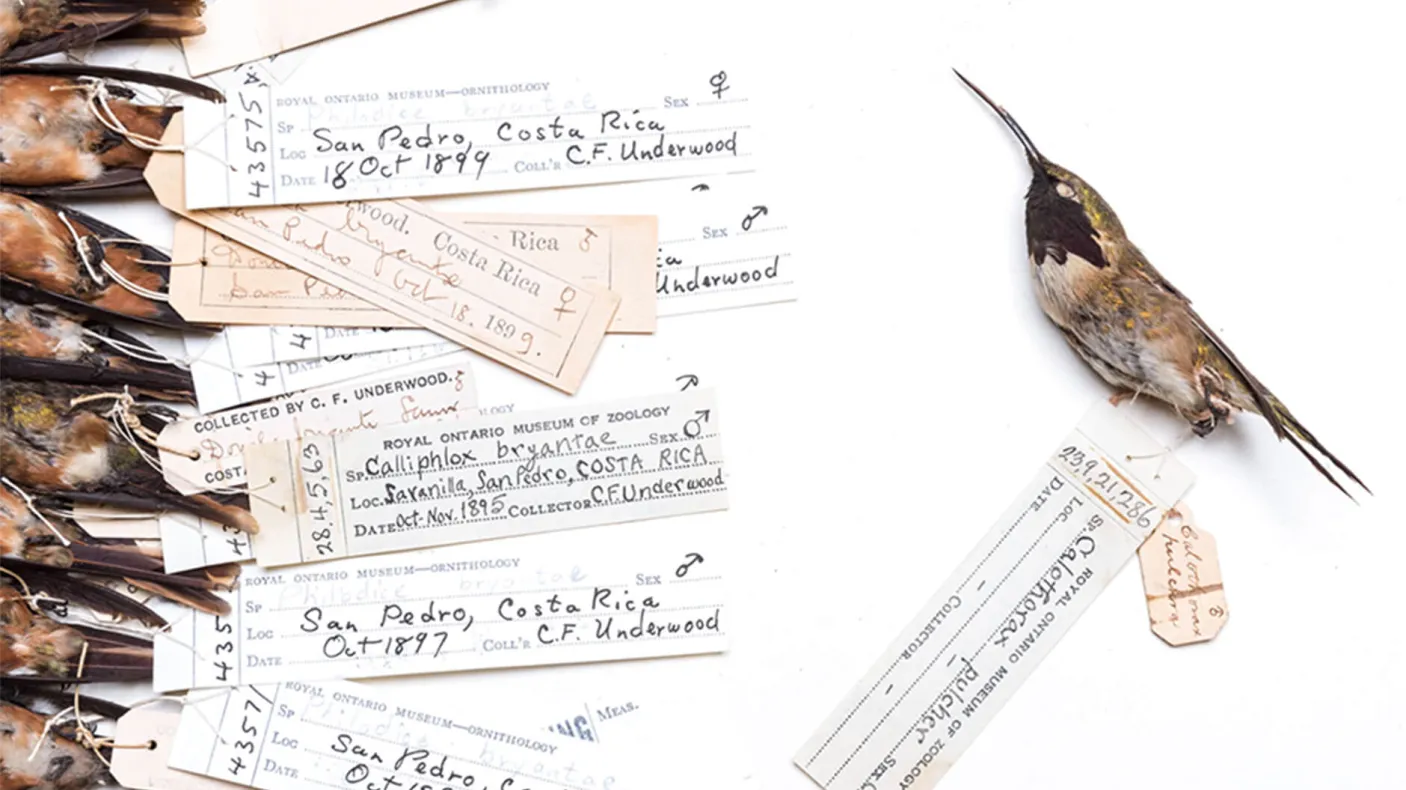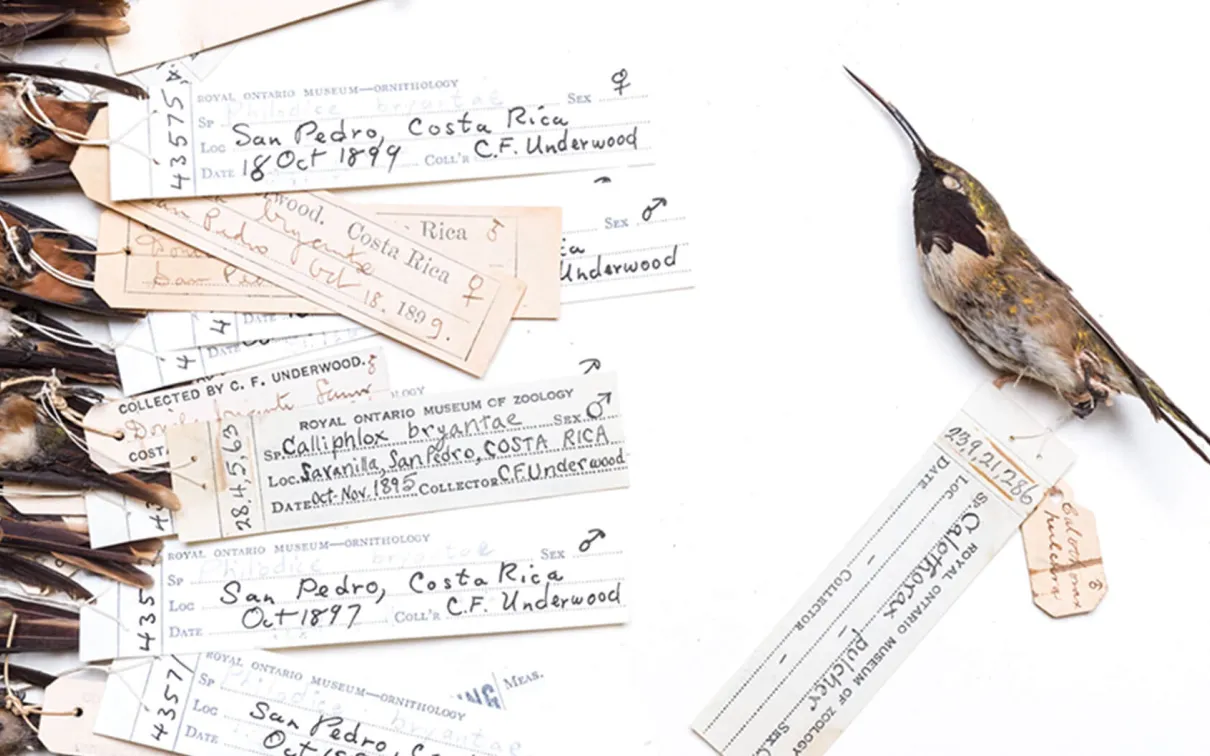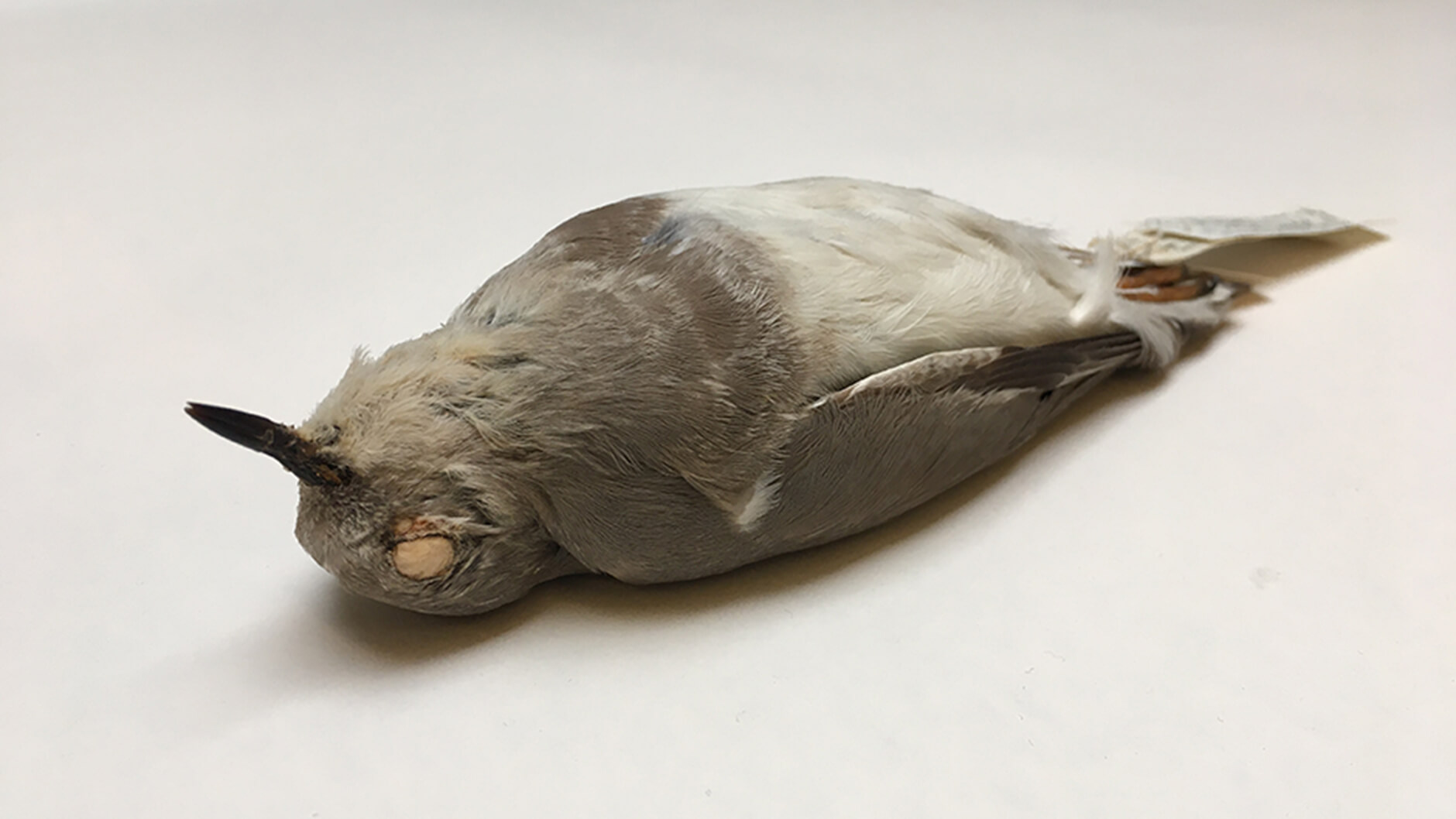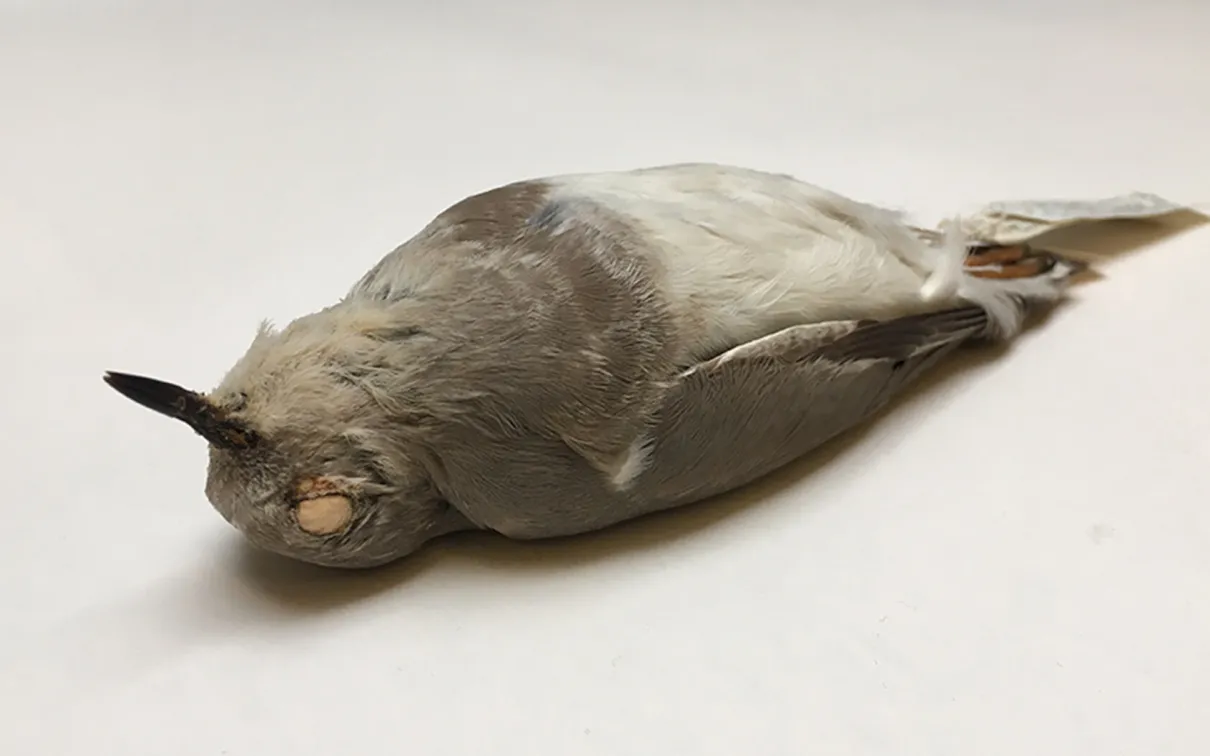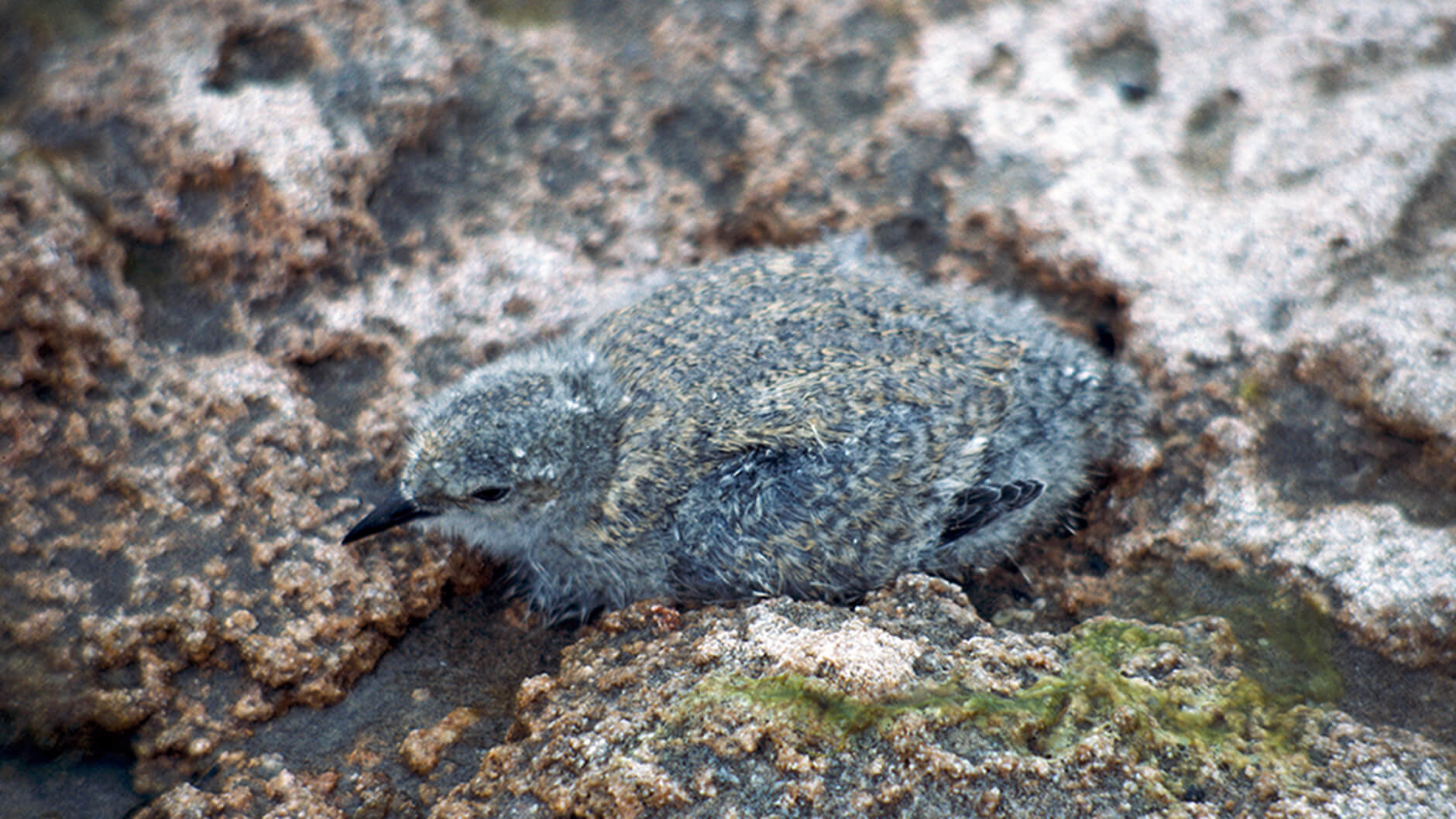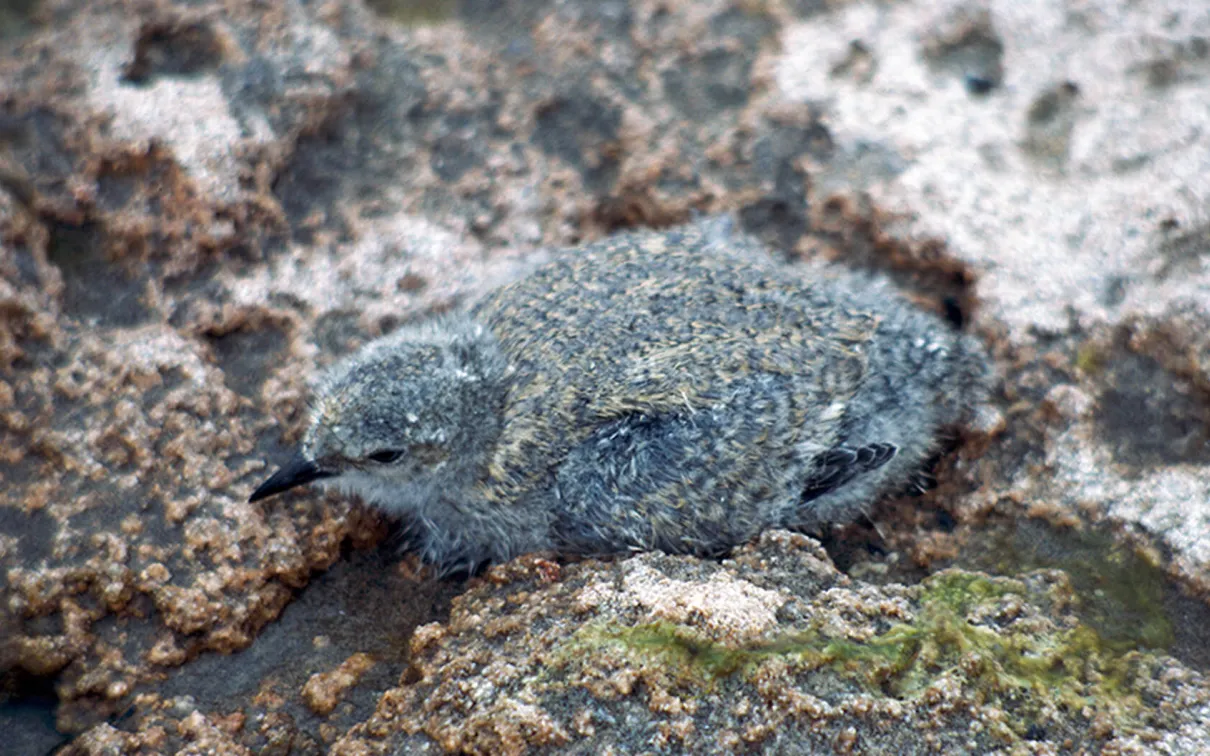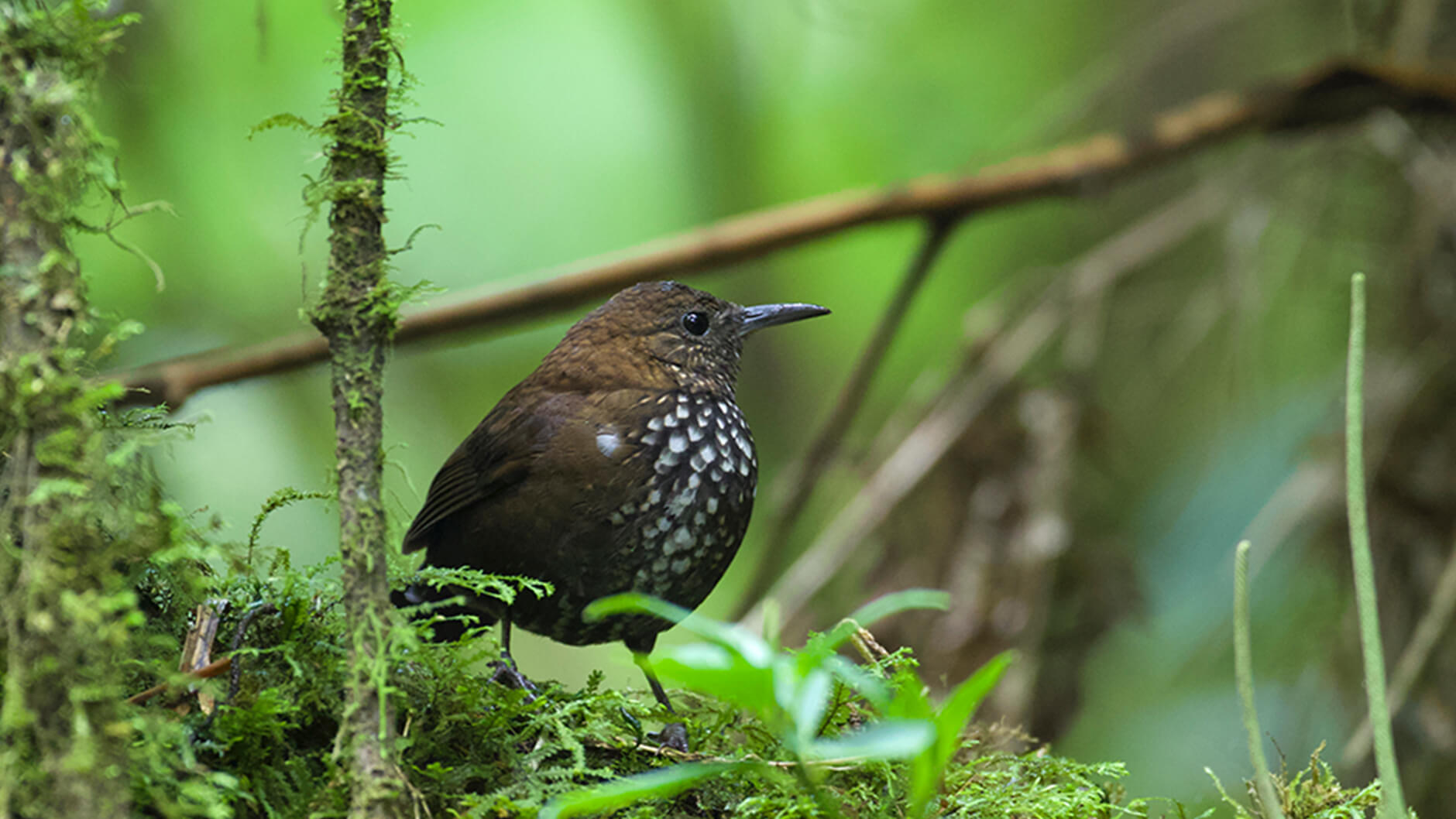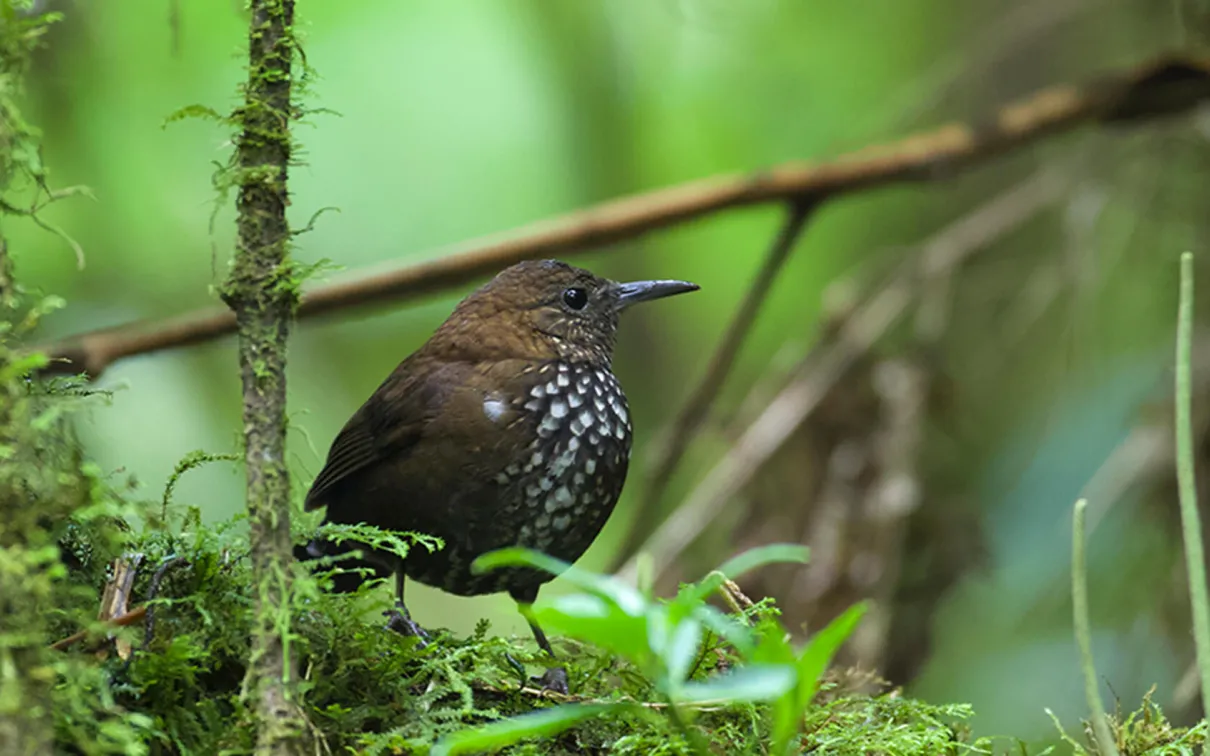Museum Collections at the Forefront of Research and Discovery
From deciphering genomes to studying the rate at which different species evolve, our ornithology collections are essential to informing new scientific research.
Published
Category
Author
Sometimes museum bird collections
Sometimes museum bird collections can seem a bit archaic. Like an out of fashion Victorian hobby. Although not dusty or disarranged, these collections don’t always give the impression of something that could be the base of cutting-edge research. But there’s more to a museum’s bird collection than display and storage. Two recent articles, both published in the world’s most prestigious scientific journals, illustrate how museum collections are at the forefront of scientific research and discovery.
The first of these studies, published in the journal Nature in November 2020, revealed the genomes—that is, the entire genetic composition—of 350 bird species. The study is part of the Bird 10,000 Genome (B10K) Project, an initiative led by a multinational consortium of academic institutions that has the ultimate goal of deciphering the genomes of all bird species. Museums, including the ROM, are prominent among the participating institutions.
The publication of these 350 genomes provides a vast amount of information about the genetics of birds. This information provides a solid foundation for myriad forthcoming studies on the biology and evolution of birds, including the discovery of the genetic underpinning of innumerable aspects of their biology. This not only will benefit basic research but also may have a major impact on our economies and health considering how humans today rely on poultry as the main source of animal protein. Never before has understanding the biology of birds been more important.
Most of the bird samples used for this study were contributed by museum collections who have conducted fieldwork in remote areas and accumulated and stored for decades an archive of tissue samples for use in DNA studies. The ROM, in particular, provided several valuable samples, including a blood sample of the Magellanic Plover, the only sample available to scientists for that species.
Despite its name
Despite its name, the Magellanic Plover is not closely related to other plovers but represents the one and only member of its own family. It breeds in the wind-swept steppes of southern Patagonia and Tierra del Fuego in South America. Mark Peck, ROM Ornithology Technician, remembers the moment when he collected the sample: “We were looking for shorebirds in a barren rocky steppe when we stumbled upon this fluffy creature sitting on the bare ground. We realized it was a chick of the Magellanic Plover and proceeded to take a blood sample very carefully. It is fantastic to know that our sample contributed to a large-scale study of avian genomes.” The next phase of the B10K project, with the aim of deciphering the genomes of all 2,250 genera of birds, has already started.
A second study
A second study, published today in the journal Science, used museum specimens to reconstruct the evolutionary relationships of a very diverse group of passerine birds, which includes tyrant flycatchers among the species that inhabit Canada. Called suboscines, these birds are most diverse in tropical regions, particularly in tropical America (a phenomenon common in other groups of animals and plants). In studying the suboscines, the researchers discovered that the rate at which new species were formed depended on the environment they lived in.
Tapping into museum collections
Tapping into museum collections allowed us to sample 1,287 suboscines species, about 99% of its total diversity. Instead of looking at the entire genomes, the study focused on a subsample of the genetic composition of each species in order to infer the evolutionary relationships among them. For the species that lacked any tissue sample in frozen collections, we were able to extract DNA from traditional museum skins. The collections of bird skeletons were also decisive, albeit in an indirect way, because bird fossils were used to provide a temporal scale to the evolutionary tree.
The resultant evolutionary tree is one of the most complete assessments of evolutionary relationships for a group with such diversity. More importantly, the evolutionary tree is a source of information on how such diversity came to be. Aspects of the evolutionary history remain imprinted in the branching patterns of the evolutionary tree, and that information can be extracted and interpreted using modern statistical methods.
The analysis revealed that the pace at which species were formed in suboscines varied depending on the environment. But climatic and geographic factors were not the factors most directly related to the production of new species. Instead, it was the number of species already present in the given environment. Surprisingly, species formed at a faster pace in regions with fewer species. For example, the Canadian boreal forest showed some of the highest rates of species formation.
This result also implies that the megadiverse Amazonian forest is not rich because evolution is faster there. Instead, tropical biodiversity seems the result of the slow accumulation of species over very long time spans.
Museum ornithology collections play an integral role in new insights into the genomic composition of birds and the processes that shaped avian diversity. As treasure troves of information about bird diversity, museum collections are an ever-growing source of material for scientists, researchers, and our society at large.
Santiago Claramunt
Santiago Claramunt is Associate Curator of Ornithology at the ROM.
